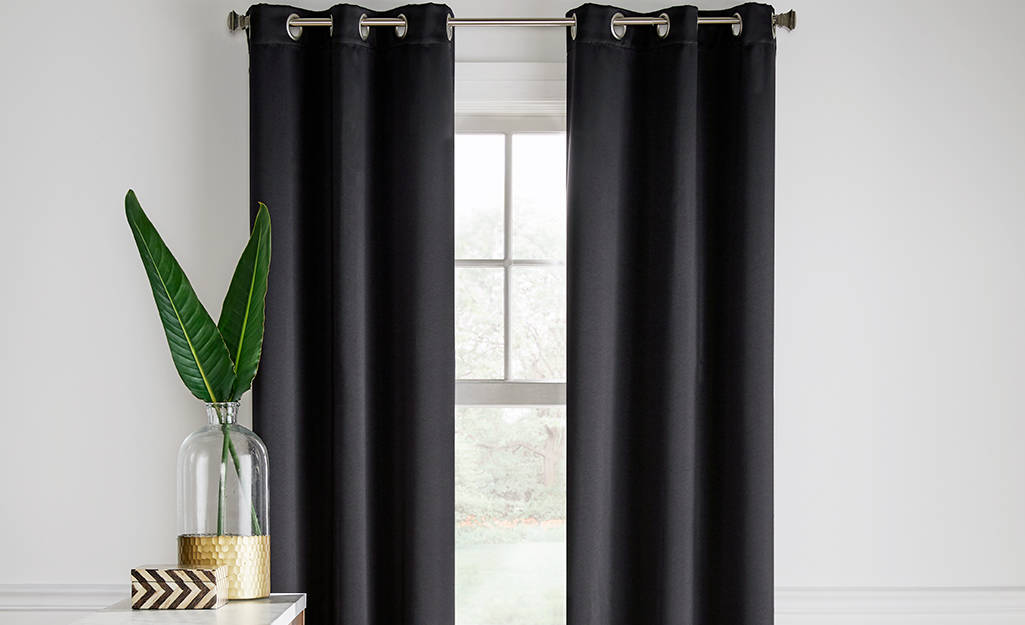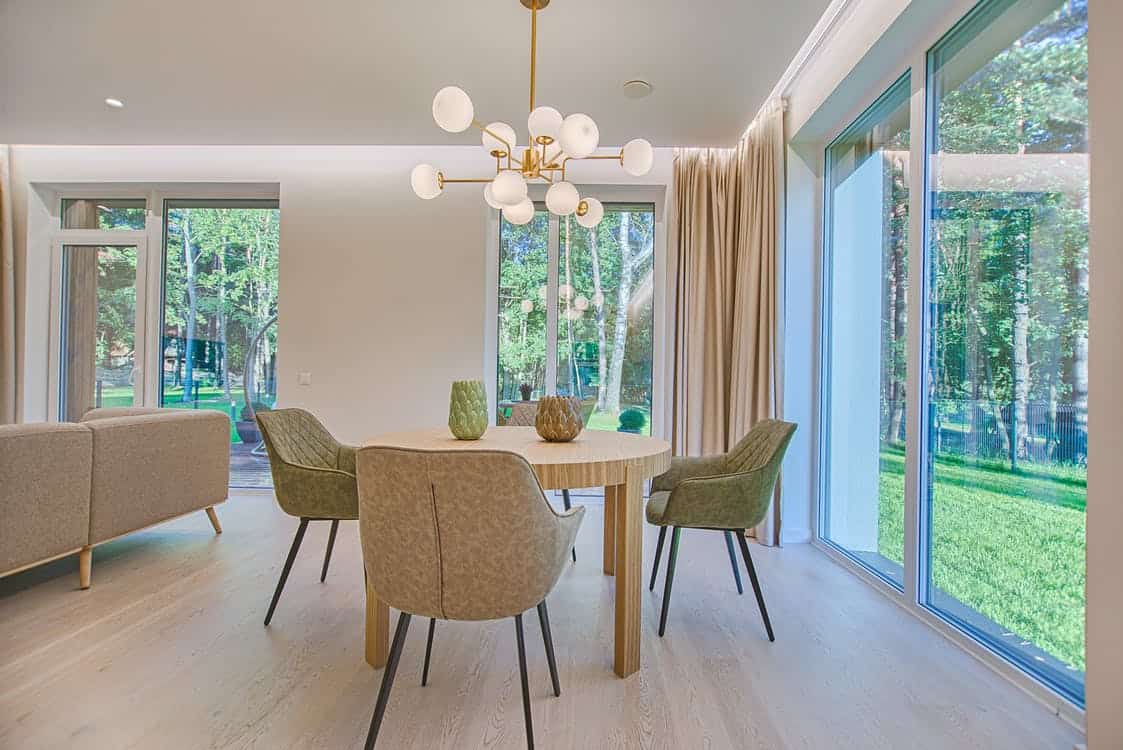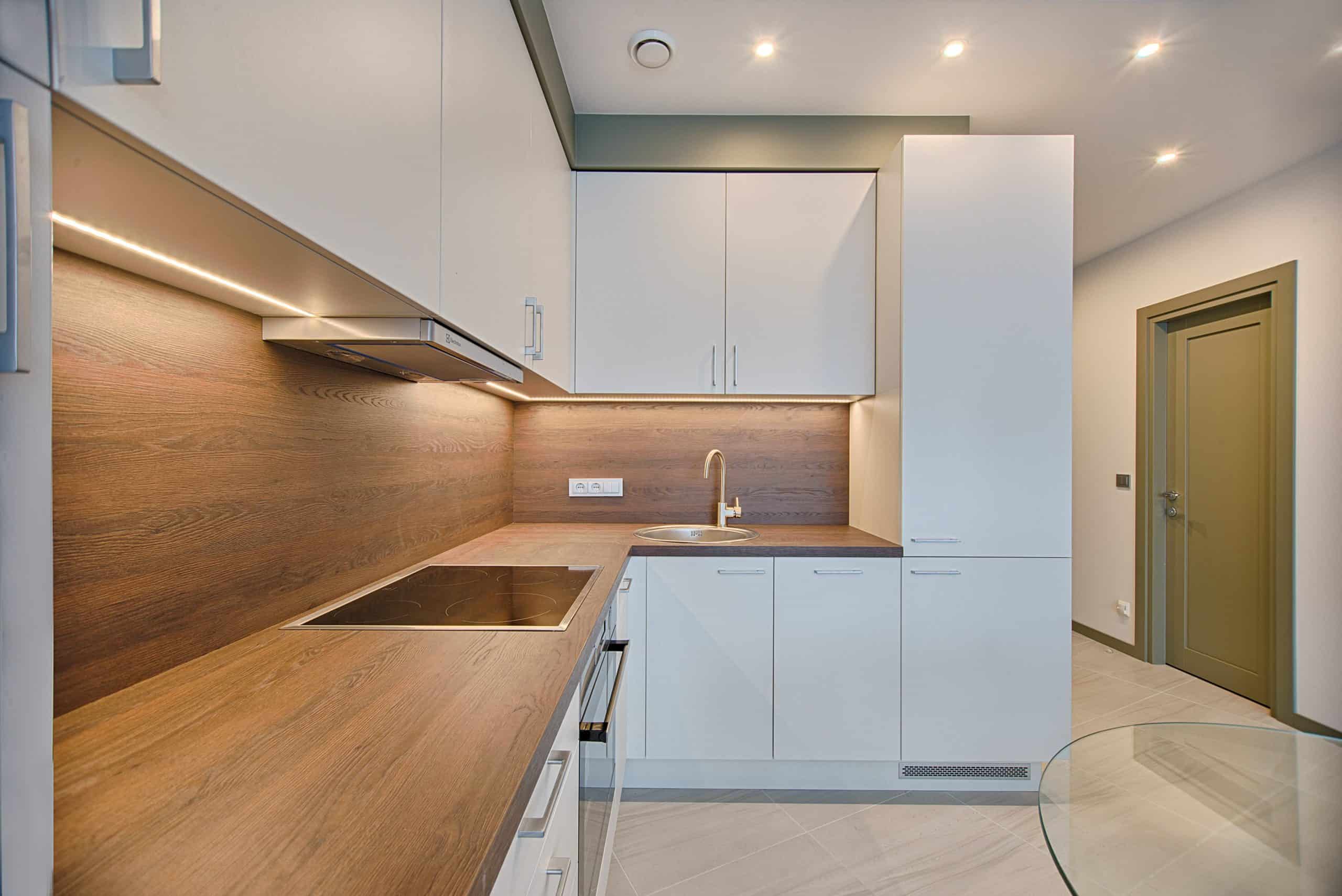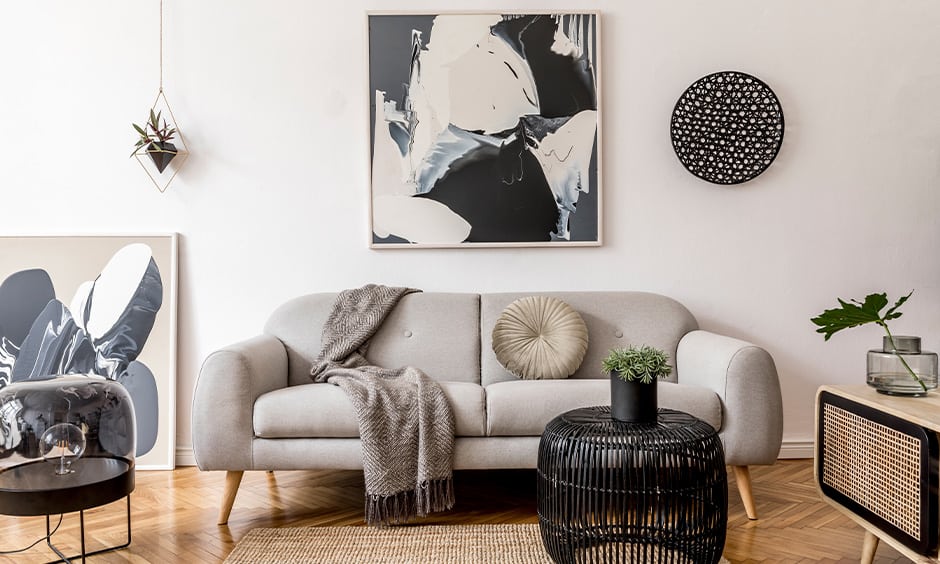Curtains are an important aspect of the interior décor of any room. If you love beautifully decorated rooms, you need to get well-fitting curtains. So, is there a standard curtain width? Yes, standard curtain widths are made to fit certain window sizes.
It could be frustrating when your curtain does not fit your window as you desire. However, with standard curtain sizes, you can measure the size of your window and check the size that fits your window.
If you don't find any that fits, you can go for one close to the size of your window or customize yours according to the window type. Also, if you are remodeling your home, you wouldn't want to hang poorly fitting curtains.
Standard Curtain Sizes
The standard curtain panels in the U.S are 48 inches wide. On the other hand, the heights come in four different sizes, which include 63 inches, 84 inches, 96 inches and 108 inches.

Image: Krostrade
If your house has a low ceiling, it is advisable to go for a height of 84 inches. This helps to create the illusion of the height of your room, making it appear higher.
Standard Window Width
Finding the right curtain width is usually not a big issue. This is because the standard curtain panels tend to be 48 inches wide.
If you have wider windows, you can opt to use more curtains instead. This will make your window look more attractive and provide you with the desired window treatments.
Measuring the Curtain Width
To get the perfect size of a window curtain, you need to measure the window's width. So, how do you do this?
The perfect rule of thumb is to add 12 inches on both sides of the window width. This is the same as adding 24 inches to your total width.
When you add these few inches, it ensures you get enough slack in the panels. The curtains will completely cover your window when closed, providing you enough privacy.
Standard windows have only two panels; however, if you have a wider window, you will need more panels. You can use four to six panels, depending on the size of your window.
Once you figure out the number of panels you need for the window curtain, you will need to divide the number by the adjusted width of your window.
For example, assume you have a 40-inch wide window; add 24 inches to et 64. Next, if you need two panels for a window, divide 64 by 2.
After dividing, you will get 32, the right size of the panels you need. This is at least 32 inches in width.
Standard Window Length
As already mentioned above, the standard curtain length comes in four sizes. This means you can choose the curtain height you desire, depending on your taste and preference and our wall's height.
The different curtain lengths include;
- 63 inches
- 84 inches
- 96 inches
- 108 inches
What are the Styles of Curtain Panels?
Curtains fall on the floor differently, giving the room a different look. This can be confusing if you are unaware of what your curtains should look like after hanging them.
With the wrong curtain height, your windows will not look appealing or attractive. So, having the right curtain height would be best to bring out the perfect window treatment you desire.
Here are the types of Curtain Panels
1. Floating Curtains
Consider purchasing light or sheer floating curtains for a room with a broad or panoramic view if you want to achieve an exotic atmosphere. You also can add a layer of knotted curtains or cascades for more exotic perspectives. The ones with some room between the floor and the end of the curtain are the best.

Image: Knockoffdecor
Because these curtains have that extra room and don't touch the floor, cleaning beneath them is simpler. This is also perfect if you have kids or pets because they can't get to them. They are useful and simple to keep up with.
2. Puddling Length
These puddling-length drapes are designed to resemble a puddle on the floor. They produce a formal and classic impression since they are longer than the window's required size. However, they typically look better for a more dramatic appearance when the cloth is denser and made of velvet.

Image: Curtainstudio
Puddling-length curtains tend to look elegant but are not easy to maintain. They also do not look attractive near French doors and windows. These curtains are also not suitable for windows that face the garden since opening them is not an easy task, and they easily catch dust.
3. Special Lengths
Some windows don't even require full-coverage curtains. Most of these windows are in kitchens.

Image: The Home Depot
Since the curtains would collect grease and culinary odors, kitchen windows shouldn't be completely covered. Likewise, bathroom windows and particularly high windowsills do not require full coverage.
4. Floor Kissing Length
You might wish to get curtains that are floor-kissing length if your room has a high ceiling or if you need blackout curtains. These lengthier curtains "kiss" the floor but do not spill or pile up on it.

Image: YouTube
If you decide to go with these, consider getting a loner size than you need, then shortening it to the desired size. This helps you et the exact size suitable for your windows. You can buy custom-made curtains for better fitting.
What is the Standard Curtain Rod?
Curtain rods come in different lengths. Some of these lengths are 28-48 inches, 48-84 inches, 66-120 inches and 120-170 inches.
With these curtain rod sizes, you can hang curtains, get enough light in, and ensure your windows look wider.
What are the Common Mistakes When Taking Curtain Measurements?
Choosing the right curtain size can be challenging if you do not know how to go about it. In addition, for attractive window coverings, you will need to ensure that you hang them well.
There are common mistakes that people tend to make that you may need to avoid. Some of these mistakes include the following and
You can also check out more of these mistakes to avoid in this YouTube video.
1. Rod Placement
This one is the most typical error that gives the impression that the room is smaller. Make sure your rods are hung at the appropriate height.

Image: Houzz
The space will not appear decent if the hangings are too low. Always hang your curtain rod high to elevate the sightline and provide the illusion of a higher ceiling.
2. Short Curtains
Before you buy curtains, measure your window length. People often make one mistake of not accounting for the distance between the curtain rod and the window, which results in short curtains.

Image: TripAdvisor
This is particularly detrimental if you put your curtains on a balcony or French door because light will be coming from the bottom.
3. Curtain Panels that are Not Wide Enough
The worst error to make is one that is also frequently made. If you get curtains that are not wide enough, they will seem plain and lack the lovely drape. You must constantly account for additional width to ensure a great wave style.
What Should You Consider Before Buying Curtains?
There is an endless number of factors to check before you buy curtains. These things ensure that you get what suits you and your needs. Let us check some of the things to put into consideration.
1. Formal or Casual Setting
Window coverings that are formal or informal in style blend in with a space the best. The window treatments' formal or informal appearance depends on the curtains' type, quality, color, and pattern.
2. Material
Although flowing and lovely, light fabrics don't always have enough structure or weight to drape nicely. Heavy, thick curtains can be unwieldy and challenging to handle, especially when opened. To achieve the desired look for the space, balance the structure, weight, and texture to match the look you desire or the room.
The common curtain fabrics include;
i) Silk- Although real silk is subject to sun damage and should only be dry cleaned, silk curtains are typically thicker and have a romantic, elegant appearance. A more robust alternative is faux silk.
ii) Polyester- This is a typical curtain material that requires little upkeep, is sturdy, and resists wrinkles. Still, it isn't the best choice for kitchen window treatments because it can catch fire and retain odors.
iii) Cotton- Cotton is a strong, classic-looking natural fabric alternative that drapes well.
iv) Velvet- The thicker curtain made from velvet has lovely draping. It effectively muffles sound and light while providing insulation to keep your room warm in the winter.
v) Linen- Although it drapes well and is a flexible natural fabric, linen may wrinkle easily and is frequently dry cleaned only.
vi) Lace- Lace offers a romantic air but lacks privacy. It is a lightweight, generally sheer fabric option.
3. Light Level
You should consider how much natural light you need to let through when selecting any kind of window treatment. For example, the variety of curtain options includes blackout curtains that block out all light to sheer curtains that let in almost all of the light.
The ideal curtains for each space depend on how you intend to utilize them. Some o the curtains you choose depending on the amount of light they let in include;
i) Sheer
Sheer curtains allow as much light as possible to enter the room. This way, such curtains create an airy and romantic atmosphere with no privacy.
You can hang sheer curtains with heavier drapes to provide privacy at night.
ii) Semi-sheer
Semi-sheer curtains provide a flowy look but with a little privacy. So, if you are someone who enjoys being in such an environment, these curtains are for you. They are a little more opaque than sheers but still allow enough sunlight to et in.
iii) Light Filtering
Light filtering curtains allow sunlight to et in, even when closed. Also, you still get some privacy as they are not translucent. These curtains are ideal for the dining room and living room windows.
iv) Room Darkening
Room darkening curtains prevent most light from entering the room. They keep the room dark enough to ensure the light does not distract you. These curtains are best for bedrooms. So, if you need some inspiring master bedroom ideas, using room darkening curtains is one.
v) Blackout
Blackout curtains use insulating layers to block all the light. However, depending on how you hang your blackout curtains, they can let in some light around the edges.
The best blackout curtains are ideal where complete dark conditions are preferred, like in the bedroom, nurseries or home theaters.
3. Header Type
The header type o your curtain also matters when choosing one. This is because it is what determines how your curtains will hang.
Each header type will provide a different look, making them all unique. Some common header types include;
i). Rod Pocket
This conventional topper has a pocket sewed into the top edge for the curtain rod.

Image: Pinterest
ii) Grommet
Metal rings, or grommets, are sewed into the fabric along the top edge of grommet headers.

Image: Curtain studio
The curtain rod fits through the openings, making it simple to slide the drapes open and shut. This choice gives off a contemporary vibe.
iii) Tab Top
Tab-top curtains have a hanging system made of fabric tabs or loops along the top border.

Image: Linen Couture
These curtains also give off a contemporary vibe and are great for informal environments.
iv) Pleats
Usually, curtain rings that slide over the curtain rod are used to hang pleated curtains.

Image: Sew-Helpful
There are numerous pleats, including inverted, goblet, pencil, and pinched pleats.
Frequently Asked Questions on Standard Curtain Width
1. What are the standard window curtain sizes?
Standard curtains come in different sizes, including; 84 inches, 96 inches and 108 inches.
2. How much wider should a curtain rod be than the window?
Choose a curtain rod wider than your window to ensure that when you pull the curtains, they don't block the windows and make the space look wider. The rod should be 8-12 inches longer than the width of your window.
Featured image: The Home Depot















